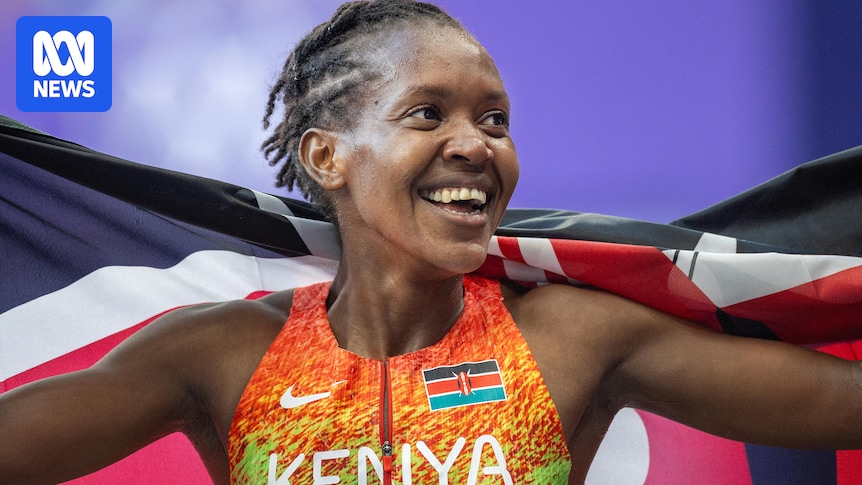
Faith Kipyegon, a three-time Olympic champion, is preparing to attempt the seemingly impossible: breaking the 4-minute mile barrier. This historic attempt will take place at the Stade Charléty in Paris on June 26, 2025. Known for her remarkable achievements in the 1,500 meters, Kipyegon is now setting her sights on a milestone that has remained elusive for female athletes.
The 4-minute mile, first conquered by Roger Bannister in 1954, has been a benchmark in athletics. Since then, over 1,700 male runners have surpassed this mark. However, no woman has yet achieved this feat. The fastest mile run by a woman is 4:07.64, a record set by Kipyegon herself two years ago. Her attempt in Paris aims to shave more than seven seconds off this time.
Nike’s Technological Edge
The attempt is backed by Nike, a company known for pushing the boundaries of sports performance. Kipyegon will benefit from state-of-the-art technology, including a specially designed skin suit with 3D-printed “aeronodes” to reduce drag, a body-mapped 3D-printed bra, and a drag-reducing headband. Her shoes, custom spikes weighing just 85 grams, feature a carbon plate and titanium pins for enhanced energy return.
This technological approach mirrors Nike’s previous success with Eliud Kipchoge, who broke the 2-hour marathon barrier in 2019. Although Kipchoge’s record was not ratified due to the level of assistance, it demonstrated the potential of technology in breaking athletic barriers. Kipyegon hopes to achieve a similar breakthrough without breaching any rules.
The Challenge Ahead
Achieving a sub-4-minute mile requires Kipyegon to improve her personal best by over 3 percent. For context, Usain Bolt’s 2009 world record in the 100 meters improved his previous mark by just 1.13 percent. Similarly, Kipchoge’s 1:59 marathon took 1.63 percent off his previous best. The scale of Kipyegon’s task is unprecedented in athletics.
“I’m a three-time Olympic champion. I’ve achieved World Championship titles. I thought, What else? Why not dream outside the box?” — Faith Kipyegon
Despite the daunting challenge, Kipyegon remains optimistic. “If you believe in yourself, and your team believes in you, you can do it,” she told Nike. Her determination is fueled by a desire to inspire future generations of female athletes.
Historical Context and Expert Opinions
The mile has a storied history, with significant leaps in performance over the decades. Diane Leather was the first woman to run a mile in under 5 minutes in 1954. Since then, progress has been gradual, with Kipyegon’s 2023 record being one of the most significant advancements.
Experts remain cautious yet intrigued by the possibility of a sub-4-minute mile. A study published in the Royal Society Open Science journal suggests that with optimal pacing and conditions, Kipyegon could achieve a time of 3:59.37. This theoretical model provides hope, but the reality of achieving such a time remains a formidable challenge.
Implications of Breaking the Barrier
A successful attempt would not only cement Kipyegon’s legacy but also redefine the possibilities for female athletes. “I want this attempt to say to women, ‘You can dream and make your dreams valid,'” Kipyegon expressed. Her endeavor represents a broader movement towards gender equality in sports, challenging traditional perceptions of female athletic capabilities.
As the date approaches, the world will watch eagerly to see if Kipyegon can achieve what many consider impossible. Her attempt is more than just a race against time; it’s a testament to human ambition and the relentless pursuit of excellence.
Should Kipyegon succeed, it will mark a new era in athletics, inspiring athletes worldwide to push the boundaries of what is possible. Regardless of the outcome, her attempt is already a victory for the spirit of sport and the power of dreams.







